Related Research Articles

Stittsville is a suburban community, part of the Canadian capital of Ottawa, Ontario. It is within the former Goulbourn Township. A part of the National Capital Region, Stittsville is immediately to the southwest of Kanata, adjacent to Richmond and about 20 km (12 mi) west of Downtown Ottawa. The urban part of the community corresponds to Stittsville Ward on Ottawa City Council and has been represented by Glen Gower since 2018. As of 2021, Stittsville ward had a population of 40,889.

The Tigers militia, also known as NLP Tigers, Tigers of the Liberals or PNL "Lionceaux" in French, was the military wing of the National Liberal Party (NLP) during the 1975–1990 Lebanese Civil War.

Danielle Arbid is a French filmmaker of Lebanese origin who has been directing films since 1997.
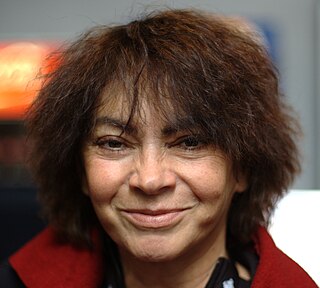
Jocelyne Saab was a Lebanese journalist and film director. She is recognized as one of the pioneers of Lebanese cinema. A reporter, photographer, scriptwriter, producer, director, artist and founder of the Cultural Resistance International Film Festival of Lebanon, Saab focused on the deprived and disadvantaged – from displaced peoples to exiled fighters, cities at war and a Fourth World without a voice. Her work is grounded in historic violence, and in an awareness of the actions and images required to document, reflect on and counteract it.

Walid Raad (Ra'ad) (Arabic: وليد رعد) (born 1967 in Chbanieh, Lebanon) is a contemporary media artist. The Atlas Group is a fictional collective, the work of which is produced by Walid Raad. He lives and works in New York, where he is currently a distinguished visiting professor of photography at Bard College, in addition to being a professor of photography at the Cooper Union School of Art.
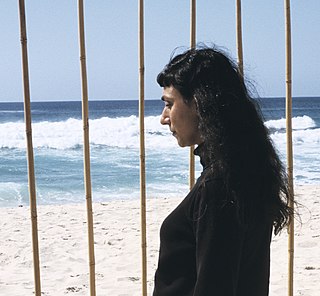
Mireille Eid (Astore) (Beirut, 1961) (Arabic: ميراي عيد اسطوري) is an artist and a writer. She left Beirut during the Lebanese civil war in 1975 to live in Melbourne, Australia. She studied the Sciences at the University of Melbourne where she graduated before becoming a full-time artist and writer. Influenced by continental philosophy, her art draws on autobiographical notions of representation and the unheimlich; where the conscious intersects with the unconscious. Through her art and her writing she "explores human emotions" and "asks what it is to be human". Mireille Eid (Astore) attained a PhD in Contemporary Arts from the University of Western Sydney (2008). She was Research Affiliate (2009–2013) at Sydney College of the Arts, the Visual Arts Faculty of the University of Sydney and Research Fellow (2011–2012) at the American University of Beirut.

The Museum and Urban Cultural Center of Beirut or colloquially; Bayt Beirut/Barakat is a venue serving as a war memorial museum and artwork showcasing center dedicated to portraying the history of Beirut, with a particular focus on the Lebanese Civil War from artistic point of views. Housed in the restored Barakat building, also known as the "Yellow House," this historic landmark was designed by Youssef Aftimus.
The Mountain War, also known as the War of the Mountain, was a subconflict between the 1982–83 phase of the Lebanese Civil War and the 1984–89 phase of the Lebanese Civil War, which occurred at the mountainous Chouf District located south-east of the Lebanese Capital Beirut. It pitted the Lebanese Forces Militia (LF) and the official Lebanese Armed Forces (LAF) against a coalition of the Lebanese National Resistance Front (LNRF) led by the Progressive Socialist Party (PSP), allied with the Palestinian National Salvation Front (PNSF) and backed by Syria. Hostilities began when the LF and the LAF entered the predominantly Druze Chouf District to bring back the region under government control, only to be met with fierce resistance from local Druze militias and their allies. The PSP leader Walid Jumblatt's persistence to refuse join the central government and his instigation of a wider opposition faction led to disintegration of the already fragile LAF and the eventual collapse of the government under President Amine Gemayel.
Lamia Joreige is a Lebanese visual artist and filmmaker. She received a BFA from Rhode Island School of Design, Providence, Rhode Island. Since the late 1990s, her works have been widely displayed. She is a co founder and co director of the Beirut Art Center. In 2011, Sandra Dagher and Lamia Joreige organized “Museum as Hub: Beirut Art Center” at New York City's New Museum.
Gregory Buchakjian is a Lebanese photographer, filmmaker and art historian. He studied at the Paris-Sorbonne University. He is the director of the School of Visual Arts at Académie Libanaise des Beaux-Arts ALBA and was co founder, with architects Pierre Hage Boutros and Rana Haddad, of Atelier de Recherche ALBA.

Beirut Knights is a 2013 novel by Jasmina Najjar. It is a series of humorous short stories about real-life Lebanese dating disasters.
Art on a Green Line is the name of an art exhibition featuring the work of the War Generation Artists at Carleton University, Ottawa, Canada between January 19 and April 14, 2015. The exhibition was curated by Johnny Alam and featured in several articles.
Mouna Bassili Sehnaoui is a Lebanese painter, writer, and artist.
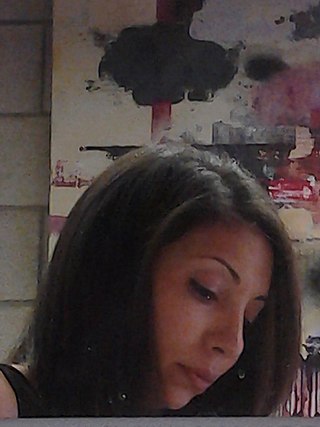
Reem Miriam Bassous is a Lebanese artist. She was born on July 19, 1978; she was raised in Athens, Greece until she was four years old due to conflict in Lebanon. She moved back to Lebanon later that year. At the age of seventeen, Reem attended the Lebanese American University in Beirut, Lebanon, and at the age of 21 she attended George Washington University in Washington, D.C. There she earned her master's degree in painting and drawing. She moved to Hawaii in 2006, and became a lecturer at the University of Hawaii.

Nayla Tamraz is a Lebanese writer, art critic, curator, researcher and professor of Literature and Art History at Saint Joseph University of Beirut. She obtained her PhD in Comparative Literature from the New Sorbonne University in 2004.
Meryl McMaster is a Canadian and Plains Cree photographer whose best-known work explores her Indigenous heritage, often using portraiture to explore cultural identity.
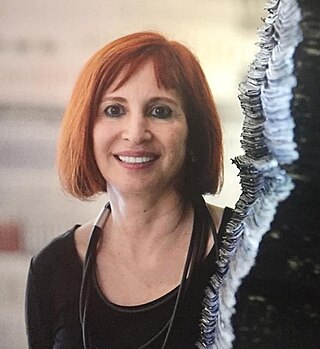
Nada Sehnaoui is a visual artist and political activist. Her artworks, spanning painting, mixed media works, sculpture and installations, have been widely exhibited internationally, and have been featured in the press and print publications worldwide.

Jayce Salloum is a Canadian multidisciplinary artist.
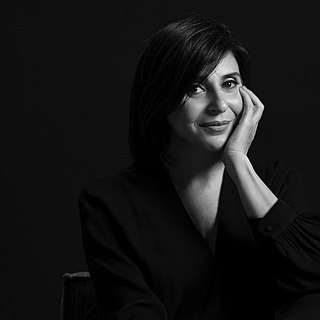
Fadia Ahmad is a Spanish-Lebanese photographer, artist, and filmmaker.

Yan Morvan was a French photographer, journalist, photojournalist, and author particularly recognized for his war photography and images of underground communities.
References
- 1 2 "L'Hebdo Magazine". Archived from the original on 2015-05-18. Retrieved 2015-05-12.
- 1 2 The Ottawa Citizen
- ↑ Carleton University
- ↑ "The Carleton University Art Gallery". Archived from the original on 2015-03-15. Retrieved 2015-05-12.
- 1 2 Herd Magazine
- ↑ The Charlatan
- ↑ "STUDY28". Archived from the original on 2015-05-18. Retrieved 2015-05-12.
- ↑ Art&Education